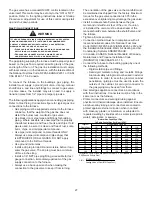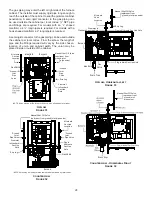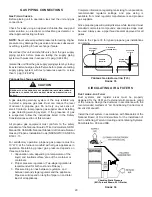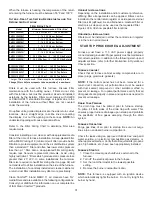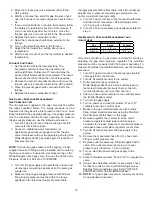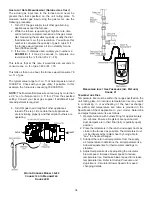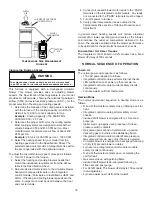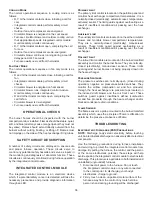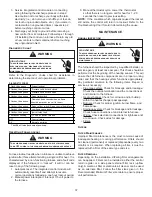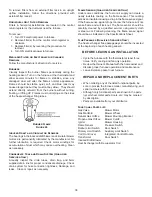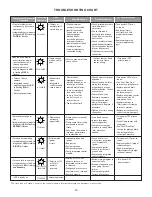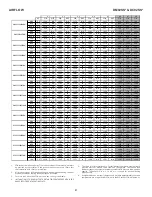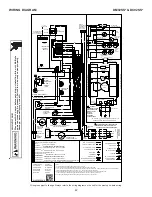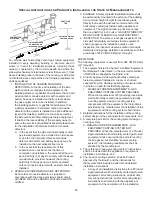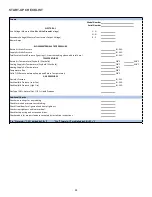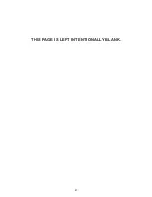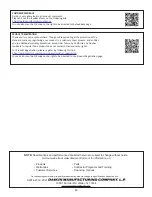
37
3.
Service integrated control module or connecting
wiring following the discharge process in step 2.
Use caution not to recharge your body with static
electricity; (i.e., do not move or shuffle your feet, do
not touch ungrounded objects, etc.). If you come in
contact with an ungrounded object, repeat step 2
before touching control or wires.
4.
Discharge your body to ground before removing a
new control from its container. Follow steps 1 through
3 if installing the control on a furnace. Return any old
or new controls to their containers before touching
any ungrounded object.
Diagnostic Chart
WARNING
HIGH VOLTAGE
To avoid personal injury or death due to
electrical shock, disconnect electrical
power before performing any service or
maintenance.
Refer to the
Diagnostic Codes
chart for assistance in
determining the source of unit operational problems.
DIAGNOSTIC CODES
1 flash, then pause
System lockout
2 flashes, then pause
Pressure switch stuck closed
3 flashes, then pause
Pressure switch stuck open
4 flashes, then pause
Open limit switch
5 flashes, then pause
Flame has been sensed when no flame
should be present (no call for heat)
6 flashes, then pause
Open rollout switch/Open control board fuse
7 flashes, then pause
Low flame sense signal
8 flashes, then pause
Igniter relay fault
Continuous flashing
115 Volt AC power reversed
OFF
Control failure
ON
Normal operation
The LED will also flash once at power-up.
Resetting From Lockout
WARNING
To avoid personal injury or death due to electrical shock,
turn OFF power to the furnace before changing speed taps.
Furnace lockout results when a furnace is unable to achieve
ignition after three attempts during a single call for heat. It is
characterized by a non-functioning furnace and a fault code
displayed. If the furnace is in “lockout”, it will (or can be)
reset in any of the following ways.
1. Automatic reset. The integrated control module will
automatically reset itself and attempt to resume
normal operations following a one hour lockout period.
2. Manual power interruption. Interrupt 115 volt power to
the furnace.
3. Manual thermostat cycle. Lower the thermostat
so that there is no longer a call for heat for 1 - 20
seconds then reset to previous setting.
NOTE:
If the condition which originally caused the lockout
still exists, the control will return to lockout. Refer to the
Troubleshooting Chart
for aid in determining the cause.
MAINTENANCE
Annual Inspection
WARNING
HIGH VOLTAGE
To avoid personal injury or death due to
electrical shock, disconnect electrical
power before performing any service or
maintenance.
The furnace should be inspected by a qualified installer, or
service agency at least once per year. This check should be
performed at the beginning of the heating season. This will
ensure that all furnace components are in proper working
order and that the heating system functions appropriately.
Pay particular attention to the following items. Repair or
service as necessary.
•
Flue pipe system. Check for blockage and/or leakage.
Check the outside termination and the connections at
and internal to the furnace.
•
Heat exchanger.
Check for corrosion and/or buildup
within the heat exchanger passageways.
•
Burners. Check for proper ignition, burner flame, and
flame sense.
•
Drainage system. Check for blockage and/or leakage.
Check hose connections at and internal to furnace.
•
Wiring.
Check electrical connections for tightness and/
or corrosion. Check wires for damage.
•
Filters.
Filters
Filter Maintenance
Improper filter maintenance is the most common cause of
inadequate heating or cooling performance. Filters should
be cleaned (permanent) or replaced (disposable) every two
months or as required. When replacing a filter, it must be
replaced with a filter of the same type and size.
Filter Removal
Depending on the installation, differing filter arrangements
can be applied. Filters can be installed in either the central
return register or a side panel external filter rack (upflow
only). A media air filter or electronic air cleaner can be used
as an alternate filter. Follow the filter sizes given in the
Recommended Minimum Filter size table to ensure proper
unit performance.





